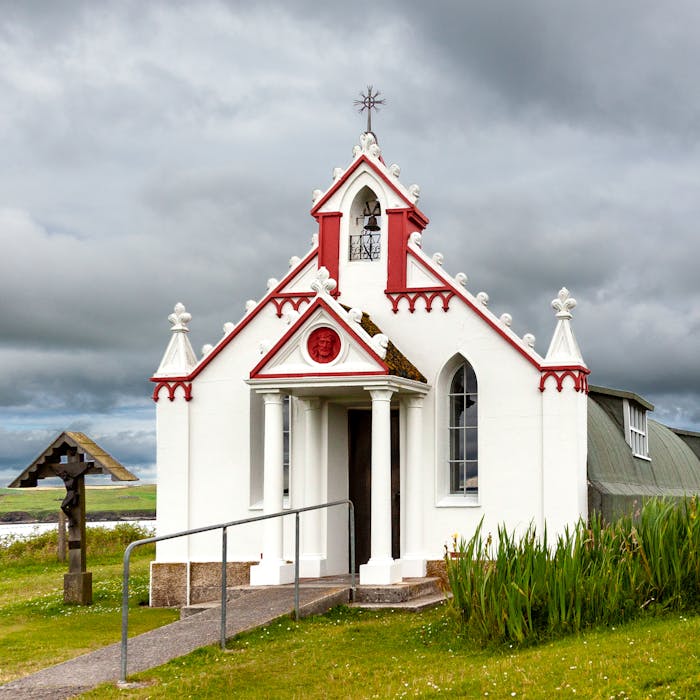
Why Orkney has its very own Italian Chapel
The Italian Chapel is a highly ornate chapel designed for Catholic worshippers on Lamb Holm in the Orkney Islands, north of Scotland. But why would there be such a chapel in what is very much a Protestant community? The answer is that it was built during World War II by Italian prisoners of war, who were housed on the previously uninhabited island while they constructed naval defences - and also somewhere to reflect their faith.
550 Italian prisoners of war were captured in North Africa, and brought to Orkney in 1942, to construct the Churchill Barriers to protect the important Royal Navy ship anchorage at Scapa Flow. 200 of these POW's were based at Camp 60 on Lamb Holm. In 1943 the commandant agreed with the camp's Catholic priest that a place of worship was required.
The chapel was constructed from limited materials by the prisoners in the form of a tin tabernacle. It comprises two standard-issue utilitarian Nissen huts joined end-to-end. The corrugated interior was then covered with plasterboard and the altar and altar rail were constructed from concrete left over from work on the barriers.
The chapel's interior was decorated mainly by Domenico Chiocchetti, a prisoner from Moena. He painted the sanctuary end, with fellow-prisoners decorating the entire interior. They created a facade out of concrete, to conceal the shape of the hut, and to make the building look like a church.
When prisoners were released shortly before the end of the war, Chiocchetti remained on the island to finish decorating the newly consecrated chapel.
The Chapel Preservation Committee was set up in 1958, by a group of Orcadians (people of Orkney). Chiocchetti returned in 1960 to assist in the restoration. He returned again in 1964 with his wife.
In 1992, some of the other prisoners returned to commemorate the fiftieth anniversary of their arrival on the Island, although Chiocchetti was too ill to travel.
Today, the chapel is still used as a place of worship and remains a popular tourist attraction, receiving over 100,000 visitors every year.
Further reading
Links to external websites are not maintained by Bite Sized Britain. They are provided to give users access to additional information. Bite Sized Britain is not responsible for the content of these external websites.
